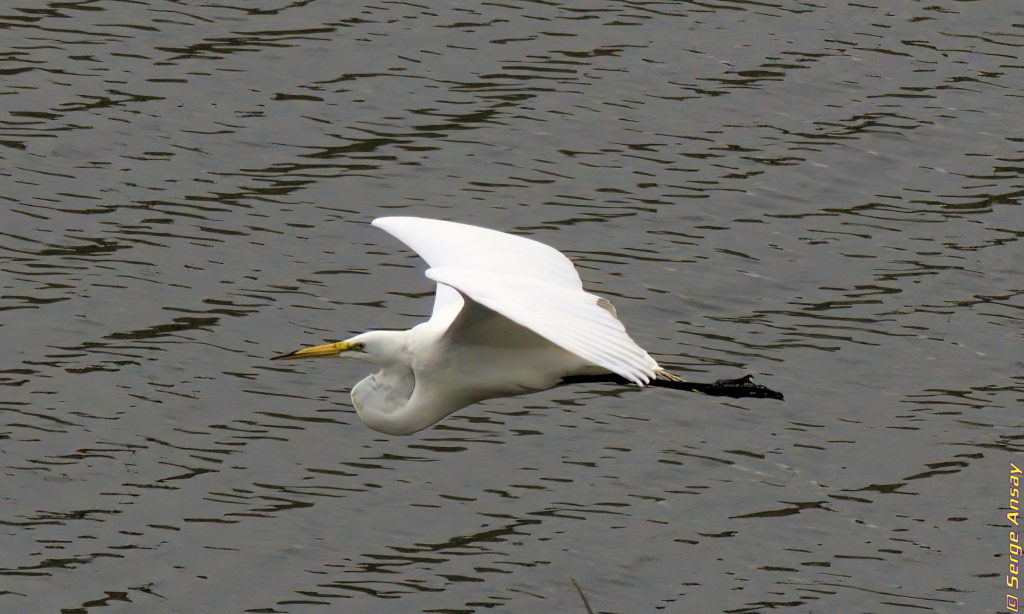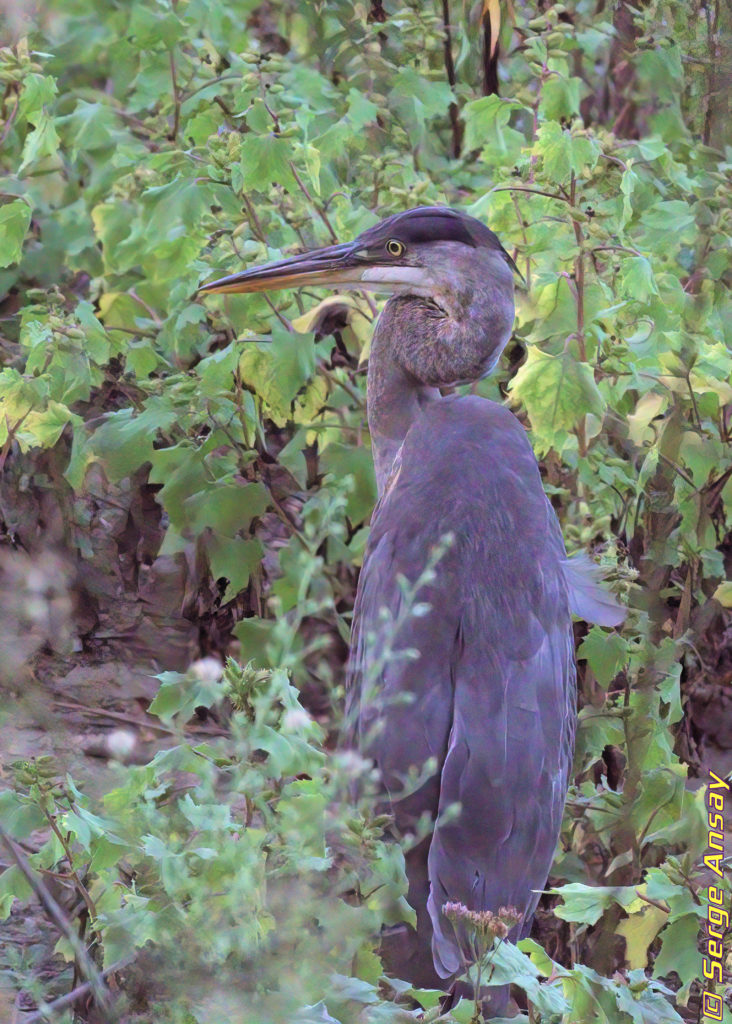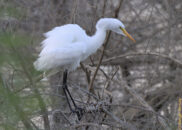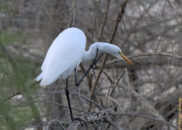Today our gallery is focused on 2 long legged birds.

I believe that the great blue heron in my pictures is rather young. I have been trying to get closer to these birds, and once again, persistence paid off. The bird in our gallery happened to be standing in the middle of the green plants, right next to the lake, as I made my way through some bushes which were hiding him from me. The most surprising thing happened. He did not fly away. He just looked at me. Of course I immediately stopped moving, except for bringing my camera to my eye. His body was facing away from me, but he turned his head to look at me from the corner of his left eye. Then, he turned his head and looked from his right eye. Seeing that I didn’t seem to be an immediate threat, he checked out the surrounding, probably trying to decide where to go to put some distance between us. As you will see in the pics, he extended his neck to have a better view. Then he started walking away amidst the greenery, leaving me very happy for this close encounter.
This was a great moment but I still would love to see some courting rituals, as I have seen some beautiful pictures of that event, and perhaps even find a nest. Tough one there. So far the only nest with eggs and babies I have ever caught with my camera were the hummingbirds here.
Then, after that encounter, I moved around the lake some more and, thanks to my stealth approach, was able to get close enough to the great egret in the next 4 pics. As you will see this is a bird who can take both elegant and interesting postures. The use of his long leg and claw to scratch his neck surprised me.
As I am sure you have noticed, these 2 birds have in common long legs and long necks. In fact, the great egret belongs to the heron family, and is also named “great white heron”. One particularity of herons is that they fly with their neck folded in an S shape, as illustrated in this picture:

The herons are carnivorous. From my readings, I get that they essentially will eat anything that’s not too big. Fish, frogs, snakes, small mammals such as mice and gophers, and insects.
They can live 10 to 25 years, but most don’t make the first year.
The great egret was almost hunted into extinction for their white feathers which were used to adorn ladies hats. 🙁








One comment